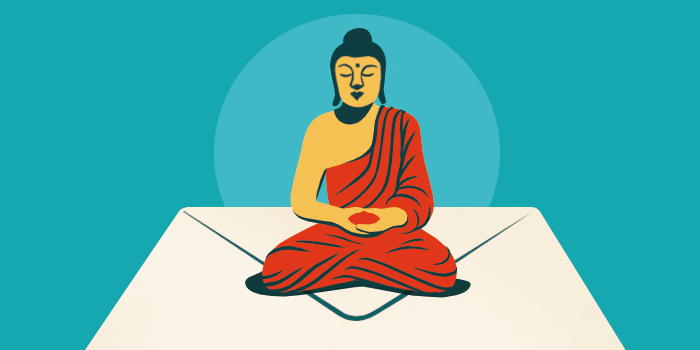Who are some prominent figures in Tibetan Buddhism?

The revered 8th-century Indian tantric master Padmasambhava (Guru Rinpoche) appears in a Tibetan painting along with Mandarava and Yeshe Tsogyal, his accomplished consorts and disciples. | Sabena Jane Blackbird / Alamy Stock Photo
The early Tibetan king Songtsen Gampo is credited with introducing Buddhism to Tibet in the late 7th century through the influence of his Nepali and Chinese wives. He also is known for uniting Tibetan feudal lords, developing the Tibetan language, and founding the first Buddhist temples in Tibet. In the early 8th century king Trisong Detsen played a pivotal role in establishing the first Buddhist monastery at Samye in Tibet, inviting Padmasambhava and other South Asian masters to Tibet to facilitate building of the monastery.
Padmasambhava (also known as Guru Rinpoche) was an 8th-century Indian tantric master revered by Himalayan people as a “second Buddha.” He and his extraordinary female disciples (and consorts) Yeshe Tsogyal and Mandarava established the Nyingma (Ancient Ones) school of Tibetan Buddhism. Legend holds that Padmasambhava also made peace with local spirits and priests, placed dozens of termas (hidden teachings) around Tibet for discovery by future teachers called tertons and brought teachings on the Dzogchen (Great Perfection) system of practice to Tibet.
In the 10th century, the Indian master Atisha (980–1054) was part of a second wave of Indian Buddhists invited to Tibet following a period of religious persecution. His Tibetan disciple Dromton (1005–1064) founded the Kadampa school.
Marpa Lotsawa (1012–1097) brought what became the Kagyu tradition of Mahamudra (Great Seal) teachings and empowerments from India, and his disciple Milarepa (1028–1111) became a celebrated poet and yogi. Milarepa’s disciple Gampopa (1079–1153) wrote the seminal text Ornament of Precious Liberation and founded a major branch of the Kagyu school, Dagpo Kagyu.
Also at this time, Khon Konchok Gyalpo (1034–1102) founded the Sakya tradition, beginning an unbroken line of Khon family members heading the order. Another notable master of the tradition was Sakya Pandita (1182–1251), who is considered one of the greatest Tibetan Buddhist scholars because of his wide-ranging study of the philosophy, logic, language, astrology, and poetry of his day.
The remarkable female yogini Machig Labdron (1055–1149) founded the chöd lineage of teachings and ritual-offering practices based on her fearless interpretation of the Prajnaparamita (Perfection of Wisdom) sutras.
Tsongkhapa (1357–1419), an accomplished master and scholar, gave rise to the Gelug school. He also wrote the famous texts Lamrim Chenpo and Ngakrim Chenmo outlining a path joining the sutra and tantra traditions.
Jamgon Kongtrul Lodro Thaye (1813–1899), one of the most prominent Tibetan Buddhists of the 19th century, compiled a five-volume compendium of practices and teachings from across Tibetan Buddhists lineages. He and his peers, Chokgyur Dechen Lingpa (1829–1870) and Jamyang Khyentse Wangpo (1820–1892), are considered paragons of the non-sectarian Rime movement.
In the 20th century, the 14th Dalai Lama, Tenzin Gyatso (b. 1935), gained worldwide renown following his escape from Chinese-controlled Tibet amid the 1959 Tibetan uprising and has since become perhaps the most recognizable Buddhist figure. The Dalai Lama is a prominent figure in the Gelug school and spiritual leader of the Tibetan people. He and other exiled religious leaders, including the 16th Karmapa (1924-1981), the 41st Sakya Trizin (1945-present), and Nyingma leader Dudjom Jigdral Yeshe Dorje (1904-1987), established Tibetan Buddhist monasteries and centers in exile in India and eventually around the world.

Tricycle is more than a magazine
Gain access to the best in sprititual film, our growing collection of e-books, and monthly talks, plus our 25-year archive
Subscribe now